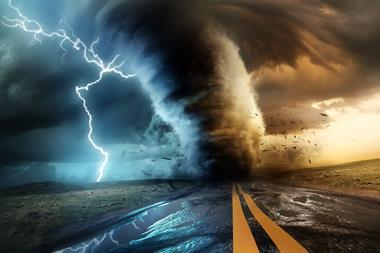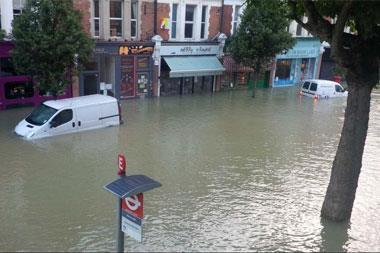When fire strikes in buildings using foam plastic materials, the results can be catastrophic and tragic
After the second world war, the use of foam-plastic materials in industrial and residential buildings became widespread. Cheap and mass produced, foam plastics have great insulating characteristics and form the core material of cladding systems, which help improve the aesthetics of a building, as well as keeping ever-more large-scale buildings warm or cool.
As a result, foam-plastics became known as a low-cost, innovative and energy-efficient building material – perfect as an insulating material in wall cavities and underneath roof covers to keep buildings cool or warm.
Meanwhile, modern metal sheet constructions became commonplace, especially for industrial buildings, and these typically have metal sandwich panel walls and roofs.
As buildings increased in size and height, customised cladding systems were increasingly used as an encasement of insulation material between metal sheets – the foam plastic layers being interrupted only by integrated window frames.
Foam plastics are popular because they are high performing and lightweight. However, the major downside of these materials is that they are always combustible.
Even the so-called ‘fireretardant’ foams that are meant to slow down or stop the spread of fire or reduce its intensity are still a huge danger to people during a fire as they will emit higher amounts of toxic fumes such as hydrogen cyanide and carbon monoxide than other foams.
Competing insulating materials - which are non-organic and non-combustible - such as mineral wool, rockwool, or glasswool, are often not chosen as they tend to be more expensive, not as easy to install, and may even have inferior insulating characteristics. In hot climates, they may also have shorter lifespans. However, these non-combustible materials have the lowest toxic emission levels, and they are fundamentally safer.
What happens during a fire?
When a fire occurs, the plastic foam will decompose within the panel or encasement system and ‘melt’. Not only does it mean that the fire spread is ‘invisible’ (inside the panel), but also the emitted vapours are in fact highly flammable themselves and highly toxic.
There have been a number of high-profile fires resulting in widespread damage and a tragic loss of life. The 1953 fire at the General Motors building in Livonia, Michigan, was the largest industrial loss ever at the time. Some 32,000 employees were made unemployed, and the insurance loss was over USD 800 million – which if calculated today, would amount to around $7.4 billion.
In 2017, 72 people died when fire ripped through the Grenfell Towers high rise building in London, which had cladding containing a composite poly-isocyanate and poly-ethylene core. As a result, many countries are reappraising high-rise buildings and cladding and insulation systems, and many structures which had previously been deemed ‘safe’ may now be considered uninhabitable.
As global trade has increased and more people have moved into high-density, high-rise buildings, the risks associated with cladding has become larger and more complex and therefore much more difficult for stakeholders to accurately predict.
Future-proofing your building
When it comes to choosing an insulating material, building owners and decision-makers must balance costs and building functionality with safety and the need to protect both people and assets. Non-combustible mineral wool, rockwool or glasswool have the lowest toxic emission of deadly fumes.
Today, all stakeholders have a shared responsibility to safeguard against any potential loss of life and other catastrophic losses. In addition to pure financial losses, considering non-insured losses, particularly life safety, should be front and centre of any decision.
Protecting assets through insurance is only part of the equation when designing or building as property and insurance markets are under increasing pressure to decline insuring buildings which are constructed using combustible materials.
J. Anton Koch is a senior risk engineer with Allied World, based in Singapore.




















No comments yet